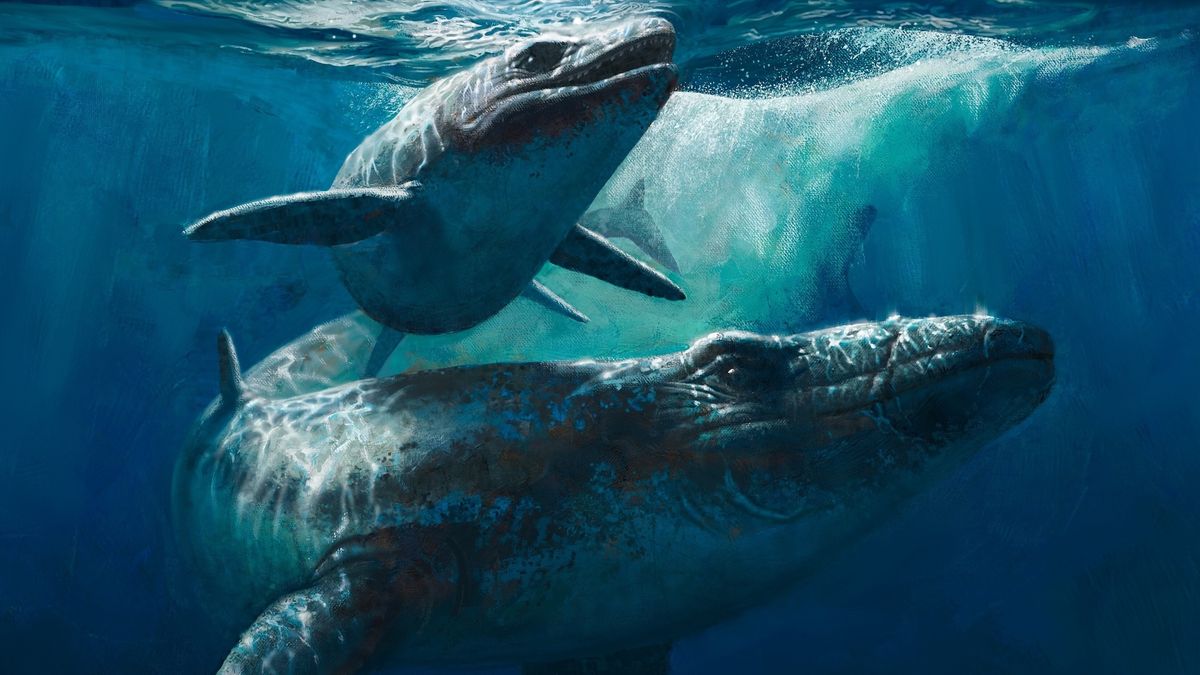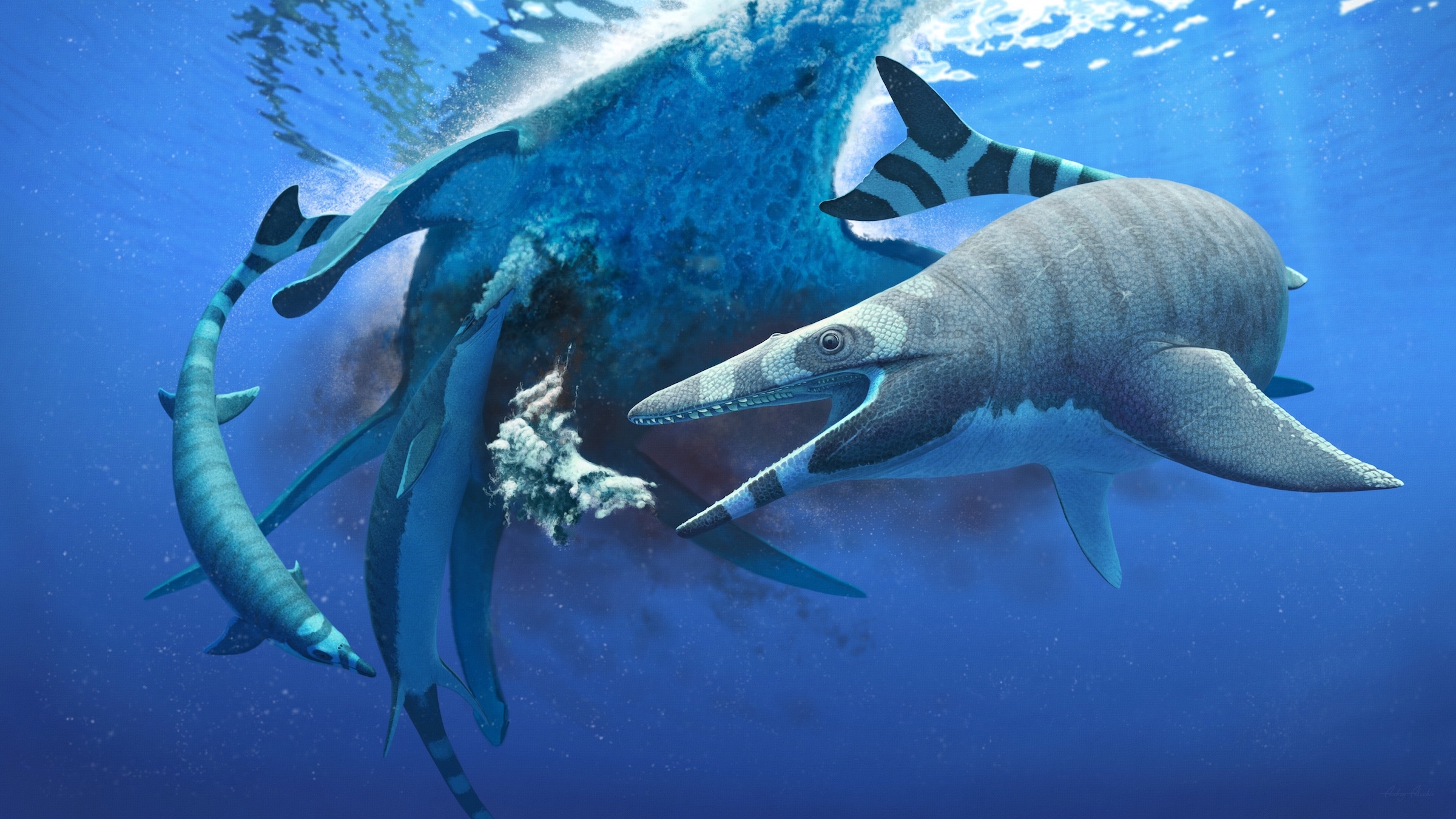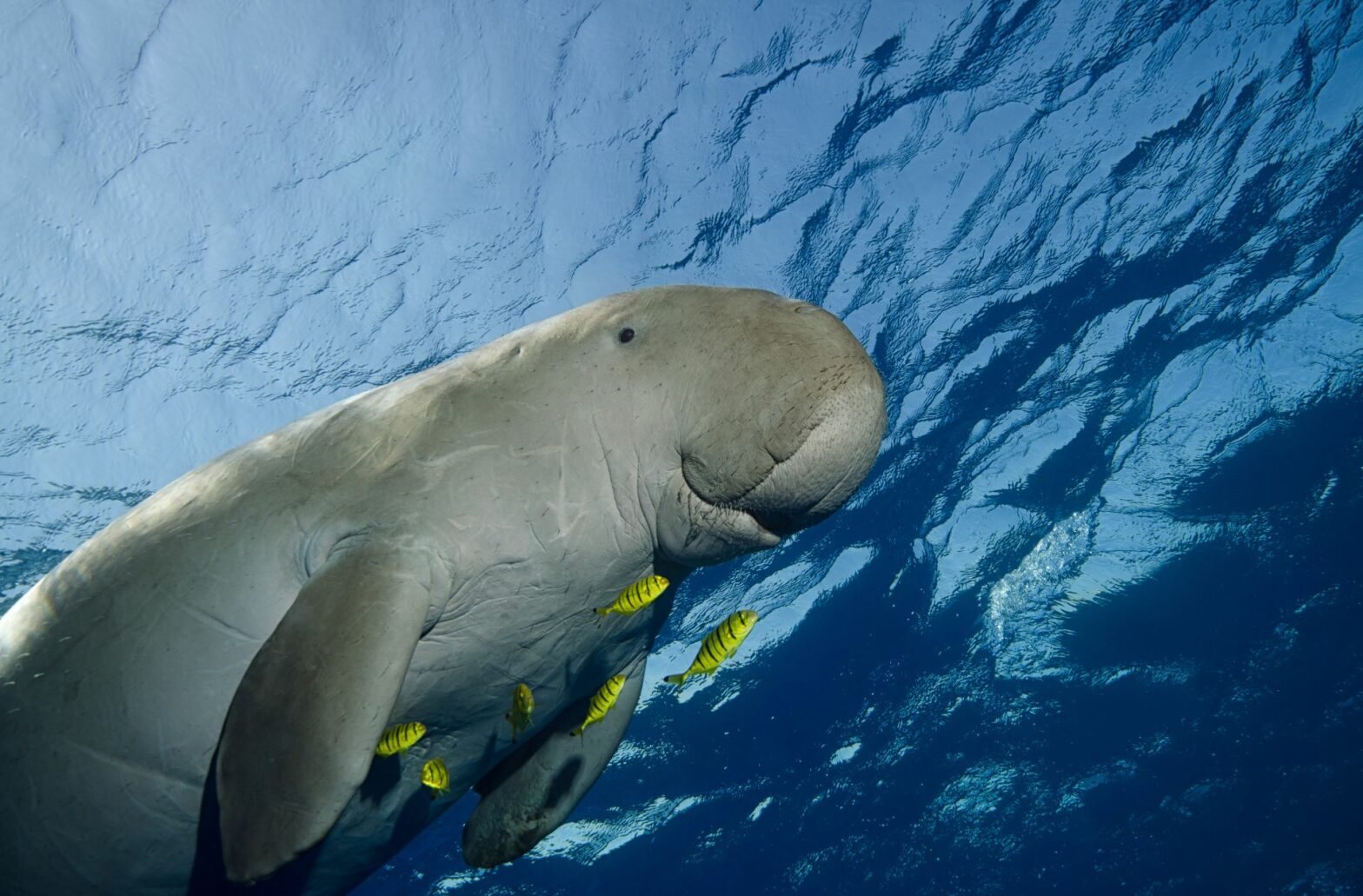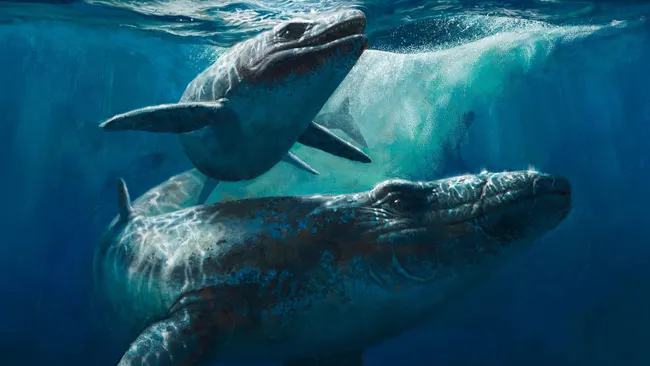A mosasaur species with saw-like teeth that was described by scientists in 2021 may have been based on forged fossils, and researchers are now calling for CT scans to determine the creature’s origin.
New Study Questions Authenticity of 2021 Mosasaur Fossil Discovery “Mosasaur species”
A never-before-seen mosasaur species first described in 2021 may be based on forged fossils, a new study suggests. Researchers are now calling for computed tomography (CT) scans of the remains to verify whether the 72.1 to 66 million-year-old jaw is real after finding a number of discrepancies that indicate it is a fake. If this fossil is indeed a forgery, it “should be established in the published literature that this is a fake,” study lead author Henry Sharpe, a researcher at the University of Alberta, told Live science.

The scientists behind the original study described the species, named Xenodens calminechari, from a partial jaw bone and four sharp teeth unearthed in a phosphate mine in Morocco’s Khouribga province. The team in 2021 examined those teeth and claimed they were unique, which became a key factor in the doubts raised by the new study published in December. 16, 2024, in the journal The Anatomical Record.
Mosasaurs were predatory marine reptiles that dominated the oceans during the Cretaceous period (145 million to 66 million years ago). They were hugely diverse, reaching lengths of between 10 and 50 feet (3 to 15 meters) feet. They also had varying tooth shapes befitting their different diets. The 2021 team claimed that X. calminechari had “small, short, bladelike teeth packed together to form a saw-like cutting edge.” This, the team said, was not only “unique among squamata” — the order to which mosasaurs belong — but also among tetrapods, or four-limbed vertebrates.

This caught Sharpe’s attention. What began as a critical review revealed troubling contradictions in mosasaur biology. It also raised concerns about the fossil’s provenance.
Unusual Tooth Features Raise Suspicions of Forgery in Mosasaur Fossil
Two of the mosasaur’s closely-packed teeth sit in one tooth socket. This conflicts with all other known mosasaur species, in which each tooth has its own socket, according to the new study. Rather than the jaw constructing the tooth sockets, the teeth themselves develop the bone that forms the sockets. Each tooth crown makes its own house,” said study co-author Michael Caldwell, a professor of biological sciences at the University of Alberta. In other words, there should be only one tooth per socket Mosasaur species.
Continuous Tooth Replacement: A Defining Trait of Mosasaurs
Mosasaurs “replaced their teeth continuously throughout their lives,” he told Live Science. “Every time one of these teeth is resorbed and falls out, there’s a huge pit left over. And that’s because the next tooth is coming into that hole to build all that tissue back up again so that it’s firmly anchored in the jaw.”
Additionally, rather than sitting flush within the jaw, two of the teeth also appear to have a little material, or “medial overlap,” extending over them on one side. That overlap shouldn’t be there in normal mosasaur tooth development. “The fact that there’s that medial overlap is a huge indicator” of a possible forgery with Mosasaur species, study co-author Mark Powers, PhD candidate at the University of Alberta, told Live Science.
Read more: https://modapkvn.com/2025/01/12/vampire-bats-unique-adaptations-and-social-lives/

Paleontologists did not excavate the fossil. The study states that the phosphate mine is known for forged fossils. Sharpe and his colleagues hoped to CT scan the fossil to verify its authenticity. Reaching out to Nick Longrich, a paleontologist from the University of Bath, proved problematic. According to Sharpe, Longrich asked if they were writing a paper. He also asked, “If so, what’s the angle of that paper?” This raised “immediate red flags,” Sharpe said.. “That’s the holotype” — the official specimen that represents a new species. He added that scientists cannot withhold information about a holotype or the holotype itself because other researchers don’t support your hypothesis. “That’s totally unethical that he would even request that,” he added.
Experts Question Fossil Authenticity and Call for Collaboration on Fossil Protection with Mosasaur species
Longrich did not respond to a request for comment about the claims in the new study. Paulina Jiménez-Huidobro, a paleontologist at the University of Bonn who was not involved in either study, reviewed the latest paper and agreed with its conclusions, noting that the “dentition appears unusual in both morphology and implantation.” Having multiple teeth in one socket suggests “that those teeth do not belong to that jaw,” she told Live Science.
“It is unfortunate that Xenodens could not be scanned,” she added. “CT scans allow us to see internal structures and to distinguish different materials based on their densities.” Wahiba Bel Haouz, a researcher at Morocco’s University of Hassan II Casablanca, highlighted that Morocco lacks legislation to protect its fossil heritage. She stressed the need for preservation measures.
Source: https://www.livescience.com/animals/extinct-species/red-flags-raised-over-ancient-sea-monster-pulled-from-moroccan-mine
